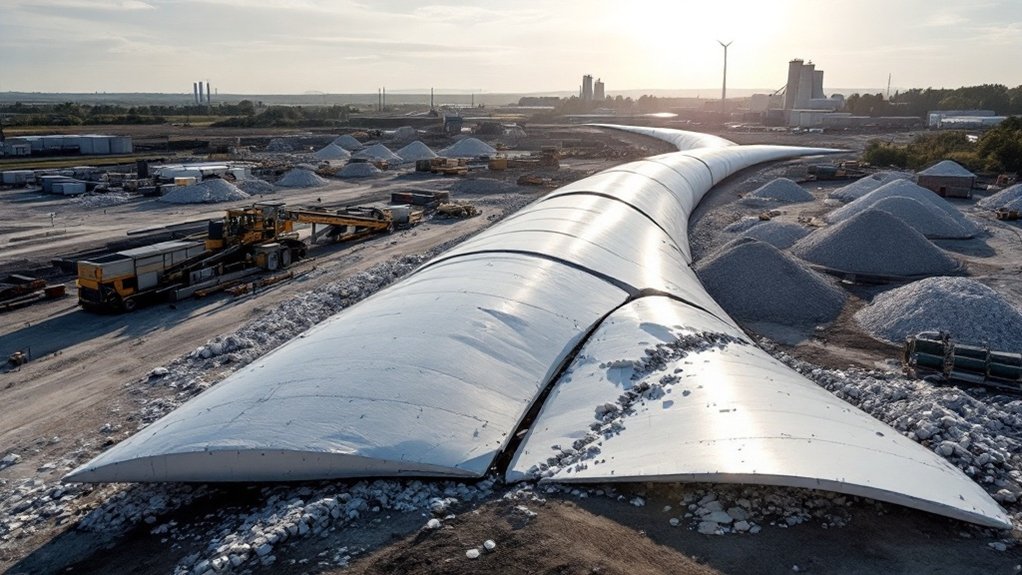Wind turbine blades get recycled through several methods, none of them perfect. The most common approach involves chopping these massive fiberglass monsters into pieces and grinding them into powder. Some companies use thermal recycling, literally cooking the blades to separate materials. Others just shred them and toss them into cement mixing – hey, whatever works. While 85-90% of a turbine can be recycled, those stubborn blades remain a thorny challenge that’s driving innovation across the industry.

Wind energy’s green reputation has a dirty little secret: those massive turbine blades are a recycling nightmare. While 85-90% of a wind turbine can be recycled without breaking a sweat, those pesky blades – made from stubborn composite materials – are giving recyclers major headaches. It’s like trying to un-bake a cake; once fiberglass and resin are mixed together, they’re practically married for life. Research shows these blades are designed for a twenty-year lifespan before requiring replacement.
Despite wind power’s eco-friendly image, turbine blades stubbornly resist recycling efforts, with their composite materials locked in an unbreakable marriage.
But the industry isn’t throwing in the towel. Several recycling methods are battling it out to become the go-to solution. The EU expects to generate 570 million tonnes of blade waste by 2030, making finding effective recycling solutions crucial. Mechanical recycling, the brute-force approach, simply chops those giants into manageable pieces and grinds them into powder. The result? Everything from carpentry materials to something called “EcoPoly Pellets” – fancy name for chopped-up turbine blade bits.
Then there’s thermal recycling, which basically cooks the blades until they give up their secrets. Through pyrolysis, the resin breaks down while the glass fibers emerge like phoenix from the ashes – albeit with a 50% strength reduction. Talk about a tough weight loss program. Companies like Carbon Rivers are actually making this work commercially, though the recovered fibers are relegated to non-structural applications.
The mad scientists of the industry are pushing chemical recycling, using solvents to dissolve those stubborn polymers. It’s showing promise in labs, but scaling up is proving trickier than teaching a cat to swim. The mining pollution from extracting materials for new turbines makes recycling even more critical.
Meanwhile, cement manufacturers have found their own solution: throwing shredded blades into the cement mix. It’s not exactly elegant, but it works – and even reduces CO2 emissions in the process.
The industry knows it needs to do better. WindEurope is pushing for a complete landfill ban on blades by 2025, and manufacturers are promising 100% recyclable turbines by 2040. New technologies are emerging, including thermoplastic resin blades that can actually be recycled properly.
It’s about time – because those massive blades aren’t going to recycle themselves, and Mother Earth is getting tired of storing our leftovers.








